Latest On Jets’ GM Search
The Jets are set to interview Eagles vice president of player personnel Joe Douglas this weekend for their general manager opening. Jason La Canfora of CBSSports.com tweets that the “scouting community” assumes that Douglas will ultimately be hired for the gig.
If this ends up being the case, La Canfora notes that it will have an impact on some of the organization’s other front office hirings. For instance, the reporter says NFL Network’s Daniel Jeremiah would not be joining Douglas’ hypothetical staff. On the flip side, former Browns GM (and recent AAF GM) Phil Savage could be a possibility for a role.
Douglas has been considered a frontrunner for the position for some time. The executive spent the past three seasons as the Eagles’ vice president of player personnel, and he played a major role in constructing the Super Bowl LII-winning roster. He was reportedly in consideration for the Texans’ GM position in 2018, but the Eagles denied Houston’s interview request.
The Jets have been connected to a number of additional GM candidates, including Scott Fitterer (Seahawks co-director of player personnel), Terry Fontenot (Saints director of pro scouting) and Champ Kelly (Bears assistant director of player personnel). We learned yesterday that Vikings assistant general manager George Paton turned down the Jets’ request for an interview.
Following former GM Mike Maccagnan‘s firing, Jeremiah surprisingly emerged as an option for “a prominent front-office position.” However, the NFL Network analyst later said that he never talked with the organization. Considering his lack of front office experience, it’s unlikely the Jets considered for much more than a lead scouting role.
Savage has served as both a coach and an executive during his long football career. He had a front office stint with the Ravens that lasted almost a decade, and he eventually moved on to Cleveland as their GM. Savage made headlines during the 2007 draft, when he selected lineman Joe Thomas third-overall before trading up for quarterback Brady Quinn. Savage was fired in 2008, and he spent the following few years with the Eagles. In 2019, the 54-year-old served as the general manager for the Arizona Hotshots of the Alliance of American Football.
Latest On Redskins LB Reuben Foster
Reuben Foster is already on the recovery trail. Two weeks after being carted off of the Redskins’ practice field with an air cast on his left leg, the linebacker underwent successful surgery on Tuesday, reports NFL.com’s Ian Rapoport (via Twitter).
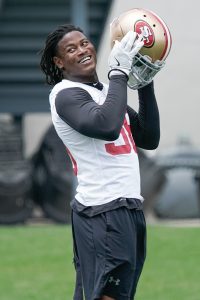 It was initially thought that Foster had suffered a torn ACL. That ended up being the case, but Rapoport notes that the 25-year-old also suffered a torn LCL. Fortunately, Foster is already raising his leg, and he’s expected to be fully recovered for the 2020 campaign. While the player’s outlook is promising, it’s obviously disappointing that Foster will be forced to sit out the entire 2019 season.
It was initially thought that Foster had suffered a torn ACL. That ended up being the case, but Rapoport notes that the 25-year-old also suffered a torn LCL. Fortunately, Foster is already raising his leg, and he’s expected to be fully recovered for the 2020 campaign. While the player’s outlook is promising, it’s obviously disappointing that Foster will be forced to sit out the entire 2019 season.
The 2017 first-round pick is one of the most talented linebackers in the NFL. However, he’s also one of the league’s most controversial players due to his off-the-field transgressions. The 49ers dropped him following two separate allegations of domestic violence, and the Redskins subsequently shocked many in the football world by claiming him off waivers.
The remaining guarantees in Foster’s contract have been voided due to those off-the-field issues, but the Redskins will be responsible for his salary since he’s sitting on the IR. The linebacker has one year remaining on his rookie contract, though the Redskins have a fifth-year option decision to make by May 2020.
The Redskins released Zach Brown this offseason, leaving them with mostly late-round picks at this position. Shaun Dion Hamilton (2018 sixth round), Josh Harvey-Clemons (2017 seventh round) and rookie fifth-round pick Cole Holcomb reside on Washington’s roster. The team also added veteran Jon Bostic last week.
NFC South Notes: Panthers, Falcons, Bucs
Although initial reports indicated Gerald McCoy‘s visit with the Panthers would begin on Thursday, he’ll actually begin meeting with the club on Friday, tweets Rick Stroud of the Tampa Bay Times. The Ravens and Browns have already hosted McCoy, and despite a slew of other reported interest, it appears McCoy will decide between Baltimore, Cleveland, and Carolina, as Ian Rapoport of NFL.com suggests (Twitter link). McCoy, 31, has reportedly drawn offers as high as $11MM per year, although that figure is difficult to believe at face value, especially given Ndamukong Suh — McCoy’s replacement in Tampa Bay — collected only $9.25MM on a one-year deal.
Here’s more from the NFC South:
- The Panthers are planning to run more 3-4 looks on defense, at least when they’re in base on early downs, as David Newton of ESPN.com writes. Rumors of a scheme change in Carolina have been bubbling for months, but head coach Ron Rivera hadn’t yet confirmed the move. Per Newton, the Panthers began experimenting with 3-4 fronts after Rivera took over play-calling for the final month of the season. According to Warren Sharp’s personnel data, Carolina ranked near the bottom of the league in 2018 in facing three-plus receivers — if that trend continues next year, the Panthers will spend a good deal of time in their new 3-4 base defense.
- Defensive end Takkarist McKinley has been experimenting at linebacker during the Falcons‘ organized team activities, reports D. Orlando Ledbetter of the Atlanta Journal Constitution. McKinley, a first-round pick in the 2017 draft, has been lining up over the tight end on certain plays. “There will be some packages where can be a linebacker,” head coach Dan Quinn said. “The value in that (presents the question of) is he a rusher or is he a dropper?” The 23-year-old McKinley posted eight sacks and 50 pressures on 617 snaps last season.
- Cam Newton has continually expressed optimism that he’ll be ready for training camp after undergoing offseason shoulder injury, and the Panthers quarterback recent took a step in the right direction. Newton has begun throwing a regulation size football, per Jourdan Rodrigue of the Charlotte Observer. The 30-year-old signal-caller sat out the final two games of the 2018 season while dealing with shoulder pain that eventually led to his operation.
- New director of athlete performance Greg Skaggs will head a sports science department on the Buccaneers‘ staff, tweets Greg Auman of The Athletic (Twitter link). Skaggs and his crew will work on training and conditioning techniques in an effort to “optimize player health and production.”
Minor NFL Transactions: 5/30/19
Today’s minor moves:
Arizona Cardinals
- Waived: LB James Folston Jr.
Atlanta Falcons
- Signed: T Dieugot Joseph, DE Austin Larkin
- Waived: T Devon Johnson
New Orleans Saints
- Waived: RB A.J. Ouellette, DB Jordan Wyatt
Oakland Raiders
- Signed: CB D.J. Killings
Tampa Bay Buccaneers
- Signed: WR Xavier Ubosi
Washington Redskins
- Waived: T Jylan Ware
Panthers WR Torrey Smith Accepts Pay Cut
Panthers wide receiver Torrey Smith has agreed to reduce his base salary of $5MM to $2MM plus an additional $1MM via bonuses, tweets Field Yates of ESPN.com.
Carolina is pursuing free agent defensive tackle Gerald McCoy and still needs to sign its top two 2019 draft picks, so the club can use any additional cap space it can get. By creating $2MM via Smith’s pay cut, the Panthers should now have roughly $11.835MM in available funds, per Over the Cap.
Smith missed five games due to a knee injury last season, appearing in only 11 games while making six starts. He was targeted just 31 times on the year, hauling in 17 of those targets for 190 yards and two touchdowns. Smith has never been a volume receiver, but he hasn’t topped 12 yards per reception since 2015, and hasn’t posted more than 40 catches since 2014.
Carolina acquired Smith, now 30 years old, from the Eagles last offseason in exchange for cornerback Daryl Worley. The Panthers exercised his 2019 option despite his lack of production last year, but that decision came with no downside, as none of Smith’s $5MM salary was guaranteed.
The Panthers added free agent Chris Hogan and seventh-round draft pick Terry Godwin to a wide receiver depth chart that already includes D.J. Moore, Curtis Samuel, and Jarius Wright, so Smith isn’t likely to see an increase in snaps in 2019. Despite today’s pay cut, he still may not be a lock for Carolina’s roster, although the club would now have to carry that $1MM bonus payment as dead money.
Seahawks Sue Malik McDowell To Recoup Signing Bonus
The Seahawks are suing 2017 second-round pick Malik McDowell in order to recoup an additional $799,238 in signing bonus money, according to Matt Charboneau of the Detroit News. McDowell has never made an NFL appearance after getting injured in an ATV accident three months after being drafted.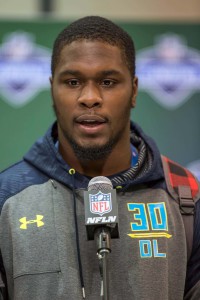
Earlier this year, an arbitrator ruled McDowell must repay Seattle a total of $1,599,238. The Seahawks withheld McDowell’s 2018 salary of $800K, and the club is now searching for the rest of the total. McDowell didn’t dispute the ruling or appeal, but he’s yet to make a payment to the club.
By sustaining severe injuries in that ATV accident, McDowell violated a portion of his contact which states he shall not “engage in any activity other than football which may involve a significant risk of personal injury,” as Brady Henderson of ESPN.com writes. McDowell spent his first two NFL seasons on the non-football injury list, and the NFL’s collective bargaining agreement indicates players on said list may be required to forfeit signing bonus money, per Henderson.
McDowell, a Michigan State product, was officially waived in March of this year and is now a free agent. Two weeks after getting cut by Seattle, McDowell took a visit with the Cowboys, but Dallas’ doctors haven’t been able to give him a clean bill of health. McDowell’s agent, Drew Rosenhaus, said in March that his client has been medically cleared by independent doctors.
As Charles Robinson of Yahoo Sports writes, the suit between the Seahawks and McDowell reveals the existence of a an extremely strained relationship between the two parties. A team suing a player for a relatively small amount of money is nearly unprecedented, per Robinson, who adds Seattle previously attempted to recoup all of McDowell’s rookie contract and is now seeing interest on the current missed payment.
How The Bills Revamped Their Offensive Line In A Single Offseason
There’s little question offensive line continuity is an important facet of any winning NFL team’s success. As Thomas Emerick of the Sporting News and Rotoviz recently examined, many of the league’s best front fives – including the Eagles, Steelers, Colts, Ravens, and Bears — are set to return all five starters in 2019. Given that the offensive line is an extremely cerebral position group where all five members are consistently working as one, it makes sense that the most productive lines are those were familiarity is a constant.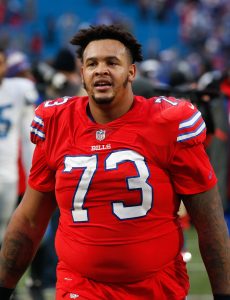
But what about when things go wrong? The 2018 Bills ranked 30th in adjusted line yards, Football Outsiders’ attempt to filter out what part of a team’s rushing performance can be attributed specifically to its linemen. While Buffalo finished in the middle of the pack with 41 sacks allowed, they ranked just 23rd in adjusted sack rate, which accounts for down, distance, and opponent. The Bills ended the season as a bottom-five club in pressure rate allowed, and Pro Football Focus listed Buffalo as a bottom-seven offensive line in overall grading.
The Bills’ struggles can’t be blamed on offensive line changes. As Vincent Verhei of FO wrote in April, Buffalo actually ranked 10th in offensive line continuity score, which factors in the number of starters a team used, the number of weekly changes to its front five, and the longest starting streak of any single five-man unit. The Bills can’t point to injuries, either, as they finished with only 5.5 adjusted games lost along their offensive line, sixth-best in the NFL.
So what exactly was the problem for the Bills’ line last season? Frankly, it was a question of talent. Buffalo didn’t have a single offensive lineman grade among PFF’s top-60 OLs, while only one — left tackle Dion Dawkins — ranked top-90 positionally. Non-starting-caliber players such as Russell Bodine, Jordan Mills, Vlad Ducasse, and Ryan Groy each played more than 500 snaps a season ago.
In order to rectify their offensive line issues, the Bills deployed an interesting offseason plan: throw everything against the wall and see what sticks. Buffalo struck quickly in February, signing interior veteran Spencer Long just a week after he’d been released by the division-rival Jets. Long is no world-beater, but he’s got 44 games worth of starting experience under his belt, can play center and both guard positions, and will cost less than $4MM against the Bills’ 2019 salary cap before a series of options kick in 2020-21.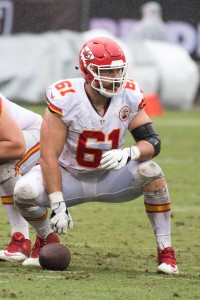
The Bills waited until the free agent market officially opened in March before making their big-ticket purchase, inking former Chiefs center Mitch Morse to a four-year, $44.5MM deal that made him the NFL’s highest-paid pivot. The 27-year-old Morse would prove to be Buffalo’s only high-priced addition to its front five, as the club wisely avoided an exploding offensive tackle market that saw Trent Brown reel in $16.5MM annually and Ja’Wuan James collect $12.75MM per year.
Instead, the Bills targeted mid-level veteran contracts to improve their offensive line, a strategy often employed by the Patriots (albeit typically at other positions). Buffalo stole tackle Ty Nsekhe from the rest of the league, signing the 33-year-old away from the Redskins on a two-year deal worth only $10MM. Nsekhe, who didn’t garner regular NFL playing time until he was 30 years old, sat behind two high-quality tackles in Washington but produced whenever he was called upon.
Buffalo didn’t stop there, and continued to add role players throughout the rest of March and April. Former Raiders backup Jon Feliciano came to town on a two-year, $7.25MM pact, tackle LaAdrian Waddle received a one-year, $2MM deal, and 48-game Titans starter Quinton Spain got one year and $2.05MM.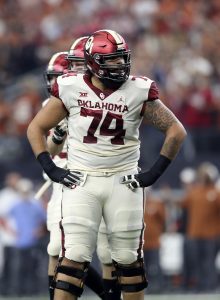
The Bills’ final offensive line improvement came in Round 2 of the draft, when general manager Brandon Beane moved up from No. 40 overall to No. 38 by trading the Raiders a fifth-round pick. That swap enabled Buffalo to select Oklahoma guard/tackle Cody Ford, a prospect whom many analysts had pegged as a first-rounder. In the Bills’ excellent behind-the-scenes draft video, Beane and his staff are seen attempting to trade back into Day 1 for Ford, expressing disappointment when they believed he was headed to the Panthers at No. 37, and registering elation realizing they’ll acquire the ex-Sooner.
Now that Buffalo has added seven offensive linemen capable of starting, the team has some decisions to make. Who exactly will play where? Morse, at center, is seemingly the only player locked into a certain position. At the Bills’ most recent practice sessions, the line has been Dawkins-Long-Feliciano-Wyatt Teller-Ford from left-to-right, but with both Morse and Spain battling injuries, that’s probably not a fair representation of what the front five will look like when the regular season begins. A more realistic guess at the 2019 starting unit might be, from left-to-right, Dawkins-Spain-Morse-Ford-Nsekhe.
An improved offensive line should do wonders for second-year quarterback Josh Allen, who struggled after being selected seventh overall in the 2018 draft. Allen finished 29th in adjusted net yards per pass attempt during his rookie campaign, and his 4.37 mark was the sixth-worst figure by a rookie signal-caller since 2011 (minimum 300 attempts).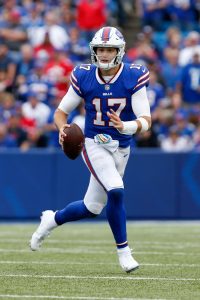
While Next Gen Stats charted Allen with the most time to throw in the NFL (3.22 seconds), that was likely a result of the Wyoming product’s scrambling ability — Allen’s legs allowed him to escape the pocket and continue the play until he could attempt a pass. Allen also led the league in both average intended air yards and air yards differential, meaning that while he was attempting a high number of deep throws, Allen wasn’t very effective with such passes. A more established pocket could allow the 23-year-old to go deep with greater efficiency.
And go deep he will. Allen showed late-season rapport with undrafted rookie wideout Robert Foster, who posted 19 receptions, 285 yards, and two touchdowns over the final four games of the season. Per PFF, Foster posted the highest average depth of target of any receiver who played at least 25% of his club’s offensive snaps. Free agent addition John Brown, signed to a three-year, $27MM contract, ranked sixth in aDOT.
Eric Eager and George Chahrouri of Pro Football Focus have researched the tremendous value of simply improving from replacement level to average along the offensive line. In fact, based on their wins above replacement metric, a team will realize a greater benefit from a front five going from below replacement level to average than it would from one that improved from average to elite.
That’s essentially the strategy the Bills have employed this offseason. No new member of their offensive line, not even Morse, qualifies as an elite level player. But Buffalo has significantly raised the overall floor of their offensive line, and could reap the benefits in 2019.
Photos courtesy of USA Today Sports Images.
Titans Sign Third-Round OL Nate Davis
The Titans have have signed third-round guard Nate Davis to his rookie contract, the club announced today.
A Charlotte product, Davis made 37 starts over three seasons while playing both tackle and guard. Per the Pro Football Focus draft guide, Davis allowed only seven sacks during his collegiate career. In 2018, he gave up just four pressures on 237 pass-blocking snaps.
Tennessee will field an all-new guard tandem in 2019 after cutting Josh Kline and allowing Quinton Spain to leave via free agency. Free agent addition Rodger Saffold will take over at left guard, but right guard is wide open. Davis, the 82nd overall selection, will compete with veterans like Kevin Pamphile and Austin Pasztor for a starting role.
With Davis under contract, Tennessee has only one 2019 draft choice — second-round wideout A.J. Brown — left unsigned.
Rams Extend CB Troy Hill
Previously given an original-round tender, Troy Hill agreed to a Rams extension. The Rams and the veteran cornerback agreed to terms on a two-year deal with a base value of $5.25MM, Mike Garafolo of NFL.com tweets.
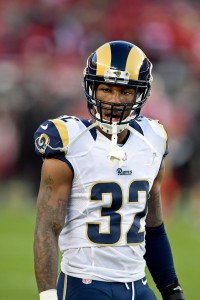 This deal could be worth as much as $8.25MM, with the additional $3MM available through playing-time incentives. Should Hill play in 52.5% of the Rams’ defensive snaps, he will collect this additional $3MM, Garafolo adds.
This deal could be worth as much as $8.25MM, with the additional $3MM available through playing-time incentives. Should Hill play in 52.5% of the Rams’ defensive snaps, he will collect this additional $3MM, Garafolo adds.
Hill had not signed his RFA tender, worth just more than $2MM, but is now under Rams control through 2020. A former UDFA, Hill started seven games for the Rams last season. Aqib Talib‘s injury opened the door for extended Hill playing time.
The 27-year-old defender played 450 snaps last season, intercepted two passes and graded out as Pro Football Focus’ No. 66 corner (among the 112 that qualified for full-time status). The Oregon product produced a higher grade in 2017. He has started 14 games during his three-year Los Angeles tenure.
While Talib, Marcus Peters and Nickell Robey-Coleman still comprise the Rams’ top cornerback trio, both Talib and Peters are in the final years of their respective contracts. Robey-Coleman is signed through 2020.
Steelers Wrap Up Draft Class Deals
The Steelers finished up their 2019 draft class’ contracts on Thursday, coming to terms with third-round pick Justin Layne on the customary four-year rookie deal.
Although the Steelers had already signed fellow third-rounder Diontae Johnson, 26 third-round picks remain unsigned across the NFL. The CBA’s vague language regarding third-rounders’ contracts annually creates delays in teams signing these players.
But Layne is now in the fold and is expected to compete for an immediate role in Pittsburgh’s secondary. After beginning his Michigan State career as a wide receiver, the former Cleveland-area high school standout became a high-end cornerback prospect. The 6-foot-2 defender started 26 games for the Spartans and joins a Steelers secondary that features Joe Haden, Mike Hilton, Steven Nelson and underwhelming former first-rounder Artie Burns.
Here is the Steelers’ 2019 draft class:
- 1-10: Devin Bush, LB (Michigan): Signed
- 3-66: Diontae Johnson, WR (Toledo): Signed
- 3-83: Justin Layne, CB (Michigan State): Signed
- 4-122: Benny Snell, RB (Kentucky): Signed
- 5-141: Zach Gentry, TE (Michigan): Signed
- 6-175: Sutton Smith, LB (Northern Illinois): Signed
- 6-192: Isaiah Buggs, DT (Alabama): Signed
- 6-207: Ulysees Gilbert III, LB (Akron): Signed
- 7-219: Derwin Gray, OL (Maryland): Signed
